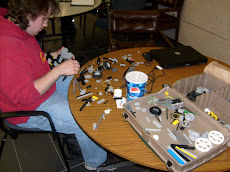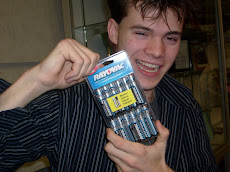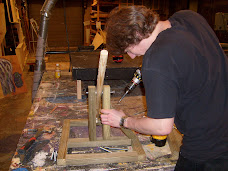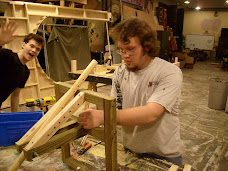Hello Readers,
This months project is unfortunatly our last one. It will mainly involve the fields of mechanical and industrial engineering. This project is a pleasant reprieve from the Lego kits because now we get to use any materials that we want to!
The problem presented to us was to design and construct an automatic coin dispensing machine that should be capable of holding and automatically dispensing up to 20 US coins in less than 2 minutes. The main factors to be considered in the design are: accuracy, speed, cost, ease of use, and ease of manufacturing. We can use any materials that we like to build it, so long as our cost does not exceed 15$. Additionally, we can use lego parts at no cost. The whole machine must also fit into a 15 cm square box. The ringer is that the machine has to be automated. By that i mean that the user cannot touch the coin to remove it. The user has to press a button or lever of some type to have to coin pop out into their hand.
Next, we brainstormed ideas for how to solve the problem. We came up with many ideas that all had different benefits. We looked at pex dispencers; they use a spring to push up the pez and the top is a lever to push out the item. We considered the different types of coin machines used in supermarket lobbys. Some have sliding drawers and other have rotating slots with different sized holes. We made designs that consisted mostly of legos to keep the price down. We tried designing the best possible dispencer with no restraint of cost. Throughout the brainstorming process we had to keep in mind the main factors that they would be looking at when grading it.
We came up with a Solution whose main quality was being cheap. Our dispencer was made at the total cost of $1.70 with no Lego parts. . We decided that the stacked tray or a machine made of Lego’s would be too problematic. The coins would be too hard to control in a file cabinet tray. And Lego’s just aren’t made to handle coins; mainly because they are so small. We chose to use the side by side PVC cylinder idea. We framed our idea off of the existing machines that are found in store lobbies. Machines like sticker dispensers devised a way for you to put money in. It has a flat sliding drawer with a hole the size of a coin in it. A person would put money in and slide the reverse dispenser under a blockade and into the machine. We decided to do just the opposite. The money would be stacked inside each of four separate PVC cylinders. The bottom would have the sliding drawers with the coin hole in it. To remove one single coin, a person would slide in an empty drawer causing a coin to fall in it, then he would simply slide the drawer back out with the coin in it.
We concluded that we discovered a very viable method of creating a coin dispencer. Our design is cheap, compact, semi-durable, effective, and it looks good. A negative issue is that it isnt as fast at dispencing as some other designs. We dispenced all of the coins within 44 seconds. Some models were able to do it under 20 seconds. Our design could have benefitted from spending a little more money to add bolts to it; this would make it amazingly durable.
On a side note, we misunderstood the problem the first time we read it. Consequently, we designed and built a coin Sorting machine. We used 4 stacked trays with holes in them. When shaken the big coins are stuck at the top, and the little ones fall to the bottom. It is able to take a handful of random coins and sort them into four piles fast. Undortunatly, it isnt very fast at Dispencing, so we started over when we found out what the real project was. This explains the other pictures with the legos. this project only costed 5$. (we would have done well in competetion.)
Well thanks for taking the time to read about our work in our IME 106 engineering class at SIUE. Hopefully we were able to interest or educate you in some way through our work.
Thursday, May 1, 2008
Subscribe to:
Comments (Atom)















